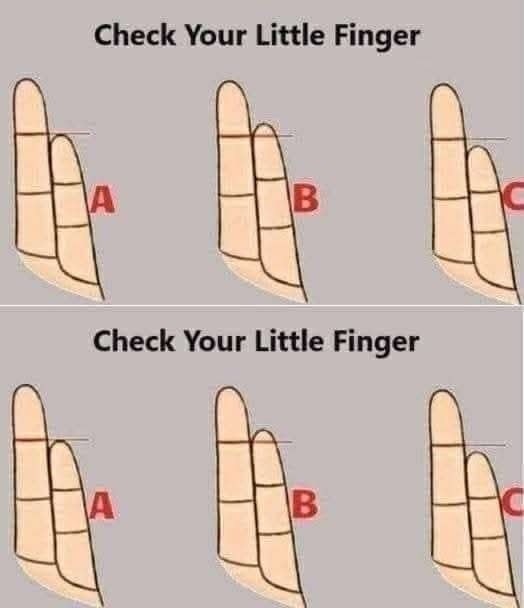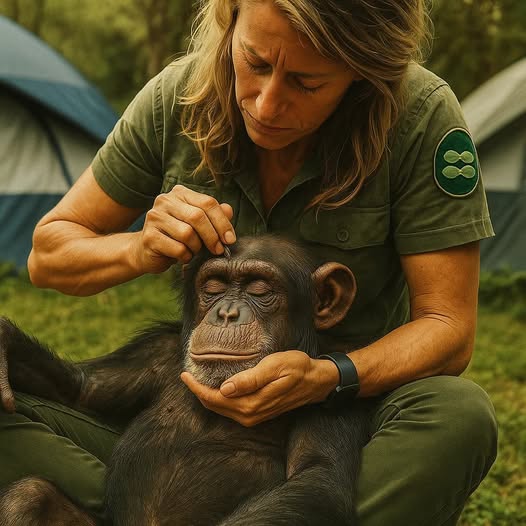When we think about personality, most of us turn to psychology, zodiac signs, or even behavioral tests. Rarely do we stop to consider that our bodies themselves—our physical features, gestures, and even the tiniest details—can reflect who we are in ways we don’t expect. Across cultures and throughout history, people have looked to physical characteristics for insight into deeper truths. Among those, the humble little finger, often overlooked and taken for granted, has been tied to symbolic meaning that some believe reveals hidden layers of personality. While not backed by hard science, these interpretations remain fascinating because they offer a lens for self-reflection and, perhaps more importantly, a reminder of the uniqueness of every human being.
The little finger, also called the pinky, plays an essential but quiet role in our hands. It balances grip, supports fine movements, and enhances dexterity far more than most people realize. Without it, our strength in the hand would be severely diminished. Symbolically, this unassuming digit has long been associated with communication, relationships, and subtle influence. Palmistry traditions, which stretch back thousands of years, often linked the pinky to traits like confidence, honesty, and creativity. Even outside of mystical systems, many cultural beliefs tied the pinky to qualities that define how we interact with others and how we present ourselves to the world.
One of the most common interpretations focuses on length. Those with longer little fingers, relative to the other digits, are often described as naturally expressive, outgoing, and charismatic. People in this category are said to thrive in conversation, adapting quickly and bringing ease into social situations. They often become the storytellers at a party, the coworkers who can break the ice in a tense meeting, or the friends who seem to know how to draw shy personalities out of their shell. Their expressiveness is rarely about seeking attention for its own sake; rather, it reflects a comfort in being seen and heard. Such individuals are often viewed as approachable, confident, and even magnetic in their ability to make others feel included. It’s no surprise that some of history’s great orators and performers have been described as having notably long pinkies, whether the stories are factual or more myth than reality.
On the other hand, people with shorter little fingers are often associated with qualities that lean inward rather than outward. These individuals may not seek the spotlight, but they tend to embody empathy, reliability, and quiet strength. Instead of commanding attention, they earn respect through consistency and care. Friends and loved ones often describe them as anchors—steady presences who bring calm in times of stress and who can be trusted to listen without judgment. Their strength lies not in outward show but in quiet perseverance. While they may not dominate a conversation, their words carry weight when spoken, precisely because they are so carefully considered. In many ways, people with shorter pinkies are seen as the heart of their communities: dependable, compassionate, and unshakably loyal.
But length isn’t the only factor. Just as revealing, some traditions argue, is how we carry and position our little finger in everyday gestures. A pinky that rests loosely and naturally, without tension, has been linked to a relaxed, easygoing personality. These are people who don’t sweat the small stuff, who can roll with unexpected changes, and who bring a sense of calm flexibility to those around them. Conversely, a pinky that stays unusually rigid or straight might signal discipline, determination, or even stubbornness. Individuals in this category are often deeply focused, sometimes to the point of perfectionism, but their drive and commitment can make them formidable achievers in any field they pursue. Meanwhile, a curled or inward-leaning pinky has been said to reflect sensitivity, caution, or a protective nature. These individuals may be deeply thoughtful and empathetic, but they are also careful about whom they let close. They often need time to trust, yet once that trust is built, their bonds run deep.
It’s important to note that these readings are not scientific. Modern medicine and psychology don’t support the idea that finger length or posture can determine personality. But that doesn’t necessarily strip these traditions of value. The truth is, symbols often matter not because they predict outcomes but because they invite reflection. Looking at your pinky and considering what it might “say” about you becomes less about fortune-telling and more about pausing to acknowledge the traits you carry—the ones you know well and the ones you might not celebrate enough.
For example, someone who recognizes themselves in the description of a “short pinky” personality may begin to value their reliability and empathy more, instead of wishing they were louder or flashier. Someone with a “long pinky” who resonates with the outgoing traits might reflect on how to use their natural ease in communication to uplift others. In this way, these symbolic interpretations act less as rigid rules and more as mirrors—tools for self-discovery and appreciation. They remind us that individuality is expressed not just in our talents or accomplishments but also in the smallest quirks of who we are.
Cultural symbolism adds another layer of richness. In some Asian traditions, the pinky has been tied to promises and loyalty—the classic “pinky swear” is a gesture that children around the world recognize as binding and sacred, even without formal explanation. In Japanese culture, the pinky has sometimes symbolized romantic relationships, with a curled finger subtly indicating love or connection. Across the globe, people have intuitively imbued this little digit with meaning, often linked to trust, intimacy, and the bonds that connect us. That universality hints at something deeper: perhaps our fascination with the pinky is less about its size and more about what it represents—small but mighty, subtle yet significant, much like the traits we sometimes overlook in ourselves.
Of course, skeptics are right to point out that personality is far too complex to be reduced to finger length or posture. But even they might agree that there’s value in any tradition that encourages people to reflect on who they are, how they relate to others, and what they bring into the world. Whether or not your little finger “proves” you’re outgoing, disciplined, or sensitive, pausing to consider these possibilities can spark meaningful conversations and self-awareness. And in a world where many of us rush through life without stopping to appreciate our own strengths, that pause can be powerful.
Ultimately, the little finger may not reveal scientific truths, but it can highlight symbolic ones. It reminds us that individuality is beautiful and worth celebrating. Your pinky, no matter its shape, length, or curl, carries a quiet message: you are unique, and the traits that set you apart are part of what makes you irreplaceable. In the end, it’s less about prediction and more about recognition. These traditions encourage us to honor both the loud and the quiet qualities within us, to see value not only in charisma and confidence but also in empathy, steadiness, and sensitivity.
So the next time you glance at your little finger, don’t dismiss it as insignificant. Instead, see it as a symbol of the subtle strengths you carry—strengths that, like the pinky itself, may be small in size but immense in importance.



